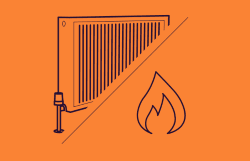You’re probably all sick to the back teeth from hearing about Covid19 and it’s wonderful array of negative side effects. There does not seem to be any respite from it. Whether it is in the form of an attention-grabbing headline on the front page of a newspaper, a Tik Tok video as you pretend to ‘work from home’, or during your habitual day-time television binge – there is no escaping the constant stream of bad press. Everybody keeps harping on about ‘the economy this’ and ‘the economy that’ – and how it is teetering on the brink of collapse. The UK government released that we are in one of the largest recessions in our history following a record fall of 20.4% in GDP from April to June. Over a fifth of the Gross Domestic Product of the UK vanished in three months – scary. Source
Or is it? Records are made to be broken, and I think it’s a good time to look back at the previous gold-medal holders in the economic disaster competition.
It would make sense to start at the top of the pile – The Great Depression. Now, I am not an economist so I won’t bore you with an intricate explanation of market mechanisms and cyclical boom-bust patterns. This is – at best – a layman’s explanation.
The great depression took place between the years of 1929 and 1932 during a difficult transition period for the UK, with the effects of World War 1 still being felt. During this time, it is important to note that the UK economy was still based on heavy industry and these were locally concentrated industries. Further to this, the Chancellor of the Exchequer at the time had just restored the Pound Sterling to the ‘Gold Standard’ – and it was incredibly strong in comparison to our US counterparts.
£1 = $4.86
This meant that it was very expensive to purchase UK export goods. For a more detailed explanation of why this is – Investopedia has a great one. This was a perfect recipe for disaster, and disaster happened in 1929 in the form of the Wall Street stock market crash. This panic wiped out millions of investors, consumer investment and spending dropped, which led to millions of jobs being lost as a result of the fall in demand for goods. As-well as worldwide government uncertainty from vanishing American credit.
The effects of this were felt worldwide. One of the things uncertainty causes is people to stop spending money, which will lead to devaluation of goods and services, which will cause more people to panic, further uncertainty, and people will stop spending money… Oh wait, I already mentioned that. You can maybe see now why the situation was so dire.
In response to the falling worldwide demand for British products, businesses attempted to lower wages of workers in-line with the new reduced value for their produce. This forced millions into poverty, and millions more out of work. By the end of 1930 export value plummeted by 50% and unemployment spiked from 1 million to 2.5 million people. The localised heavy industry areas were hit the hardest – by 1933 30% of Glaswegians were unemployed.
The recovery was incredibly slow – as all effected countries tried to save themselves by implementing tariffs and trade barriers to competitors. Following a withdrawal from the Gold Standard and subsequent devaluation of the pound combined with lowered interest rates from 6% to 2%, British exports managed to become more competitive. (Go read the article from earlier if you want to understand why). This led to a rise in demand for British exports, which translated to a fall in unemployment in 1934. Further falls in unemployment were recorded in the years following and the UK slowly began to recover.
You’d be forgiven for thinking that it is only modern economies that can crash and burn so spectacularly – but there are cases of economic disaster dating hundreds of years prior to this. 15th century England was by all measures, an awful time and place to live. Fresh off the back of an incredibly contagious killing disease (sound familiar?) the English economy was booming. As a result of almost half of the population being unable to work on account of being dead – labour was at a premium and wages skyrocketed, causing widespread inflation.
As a result of this inflation, the prices for grain and other products began to spike sharply – this trend hurting landowners as the value of estates across the country struggled to keep up with the rife inflation. During this time, England was at war with France in the Hundred Years’ War – and if wars are anything, they are expensive. Cicero was famously quoted as saying:
“The sinews of war are infinite money”
And who pays for reckless government actions? The taxpayer of course! A new Poll Tax was implemented along with taxes on movable property and trade. In combination to this wonderful new policy, there was a huge European coin shortage from severe silver shortage. Silver bullions began to become so expensive due to their scarcity that the mid-14th century inflation began to vanish, and even began to reverse into deflation. It is difficult to quantify the exact scale of how bad the deflation in England was – but what really forces this economic meltdown into the conversation is how long it lasted.
For over fifty years the English economy and associated products contracted and deflated… To put this into perspective – most people alive today will remember the 2008 worldwide economic crisis. For arguments sake, we will say it started in 2008 and recovery wasn’t achieved until around 2013.
This recovery to pre-recession GDP took five years. The 15th century depression lasted for FIFTY years. It is quite unthinkable to comprehend the sheer length of this disaster, and how difficult it must have been for anyone living in 15th Century England.
So – after reading all of this, do you feel quite as scared about the prospect of the current economic crisis? I know I don’t. The two economic disasters selected for brief analysis are far from the only case studies to choose from, and the analysis barely scrapes the tip of the iceberg for why and how they happened. One benefit of looking backwards into history is human behaviour repeats itself, and quite often nestled amongst all of the war, famine, disease, and pestilence are the answers and solutions we are all looking for.
We have recovered from far worse in the past, and we will recover from this too.
So, I say to you – lock the door, put the kettle on, grab a few biscuits and put the telly on. We are nearly at the end of this pandemic, and the light is becoming visible at the end of the tunnel… Right?



